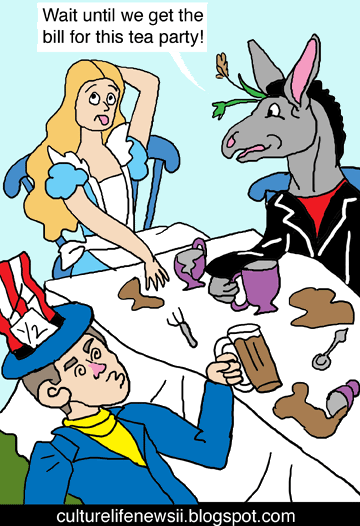The NY Fed’s Trading Desk Head Laments The End Of Stupid Leverage And Wants His Derivatives Back (Or Why We Are Stuck With ZIRP For A Long, Long Time)
 Courtesy of Tyler Durden
Courtesy of Tyler Durden
In a video conference before the ACI 2010 World Congress in Sydney, Australia, the head of the FRBNY’s trading desk, aka, the busiest daytrader over the past year, Brian Sack, demonstrated once again that Fed members are either completely clueless about ongoing market dynamics or are so good at octuple re-reverse psychology, that they make the squid pale in shame and squirt ink in envy.
Before we get into the meat of Sacks’ lament, it bears refreshing on Paul McCulley’s letter from yesterday. While Paul may have been merely pushing his book in an attempt to convince readers that rates will (or should) stay mega low for years and years (and Greenspan will be more than happy to admit that low rates have nothing, nothing, to do with asset bubbles), he did have one great observation, namely that the explosion in various forms of shadow credit: derivatives, securitizations, etc., were all dictated by the need to leverage a relatively flat yield curve.
When the 2s10s is in the 40-50bps range, financial institutions needed to find a way to leverage the long-dated end of the curve: if the Fed would not cooperate in bringing the near-end lower, well, demand for, and application of financial innovation, resulted in the multi-trillion shadow banking system. This extremely simple observartion is of remarkable consequence: securitization was not predicated on extra supply of cheap credit but arose out of bank demand for synthetic steepness: instead of capitalizing on the unlevered curve steepness, banks decided to go the volume route, making credit a way of life for everyone, thus allowing them to go all in on a massively-leveraged curve trade. The key implication is that in the current Fed-dominated environment, where the 2s10s is at record levels of almost 300 bps, banks have no need for shadow banking! Another way of saying this is that what financial institutions needed a multi trillion shadow system for, when the curve was flat, they can achieve now with the curve being as steep as it is and without shadow banking. The big banks simply do not have a need for shadow banking: ergo the demand pull side. And no matter how much banks push loans, or, more relevantly, the Fed tries to push shadow banking, it does not matter so long as banks have no need for it. This is the modern quandary simplified to the highest degree. And yet the Fed, or at least its key Portfolio Manager Brian Sack, is unable to comprehend this.
Enter Fed thinking. In his long speech yesterday, Sack’s thoughts basically boil down to this:
It is worth making a few observations about the functioning of financial markets as we think about how to encourage a safe and yet efficient financial sector. These points may be obvious but are worth emphasizing.
First, securitization is a powerful vehicle that should play an important role in the intermediation of credit in the economy. Securitization can be quite effective at transforming illiquid assets into negotiable securities and transferring risk to a more diversified set of holders. To be sure, the expansion of securitized credit was much too extensive, and its subsequent collapse was terribly disruptive, contributing significantly to the damage to the economy. However, those developments do not mean that securitized credit, if structured properly, should not return in size. Reform efforts, to be effective, should foster development of a securitization market that properly aligns incentives and provides adequate transparency about risk transfer.
Second, the use of derivatives is integral to the broader functioning of financial markets and the intermediation of credit. Derivatives allow for the redistribution of risks through hedging activities, and they foster improvements in price discovery and market efficiency by facilitating appropriate investments in long and short positions in some types of assets. But while OTC derivatives already provide important benefits, more could be done to enhance the robustness of this market. The measures under consideration promote greater use of central counterparties, increased regulatory and public transparency, wider involvement of exchanges and electronic trading platforms for actively-traded products, and stronger operational and risk management practices.
Third, the financial system cannot operate efficiently without leverage. The preferences of businesses and households in their regular economic activities require that intermediation and maturity transformation be conducted somewhere in the financial system. Of course, much of the turmoil we witnessed across financial markets was due to the build-up of excessive leverage in the system, and we cannot miss the chance to learn from this painful lesson. But we should also understand that a reduction in leverage to near zero in the financial system is not desirable, as it would significantly reduce the efficiency of credit intermediation. Instead, discussion should be focused on how to make the use of leverage less procyclical, to identify those sources of leverage that are most productive and to better monitor the vulnerabilities that can result from excessive leverage.
Does anybody notice the blatant contradiction between what the Fed "wants" and what Dodd’s proposed toothless reform is expected to "achieve." Regulatory capture and hypocrisy aside, it is reading between Brian’s lines that is critical. Sack realizes that the Fed will need to start raising rates at some point: be it in H2, in 2011, 2015, 2999, some time. In the meantime the marginal benefit to banks P&Ls as a function of the record steepness is already getting exhausted. The only way to counteract this: begin the shadow leverage play once again. However, to cover up its tracks, the Fed wants banks to preempt its flattening initative by expanding on securitization ahead of rate hikes, thus minimizing the impact of the most artificial monetary environment in the history of America.
 Should we go from a 300 bps curve to 100, it is a virtual certainty that merely that move alone will be enough to if not destroy a few of the TBTFs, then require a new and much more sizable reimplementation of TARP. What is most troubling, is that the Fed, just like the clueless-in-all-matters-economic Obama administration does not realize the difference between supply push and demand pull. One should ask how the whole spree to get banks to lend to consumer is working out? Well, with mortgage rates at record lows, and business climates worst than ever, consumers just don’t need to borrow. Doesn’t get any simpler. And absolutely the same thing, only magnitudes larger, is relevant to the Fed-Banking System relationship.
Should we go from a 300 bps curve to 100, it is a virtual certainty that merely that move alone will be enough to if not destroy a few of the TBTFs, then require a new and much more sizable reimplementation of TARP. What is most troubling, is that the Fed, just like the clueless-in-all-matters-economic Obama administration does not realize the difference between supply push and demand pull. One should ask how the whole spree to get banks to lend to consumer is working out? Well, with mortgage rates at record lows, and business climates worst than ever, consumers just don’t need to borrow. Doesn’t get any simpler. And absolutely the same thing, only magnitudes larger, is relevant to the Fed-Banking System relationship.
The only question, monetary policy theory aside, is whether the Fed needs, as Sack suggest, the reemergence of shadow banking in advance of a rate hike? If that is the case, then the US will be stuck with ZIRP for many years, as banks leach out the marginal (albeit increasingly declining due to increasing charge off/delinquencies on the longer end) benefits of the steep curve until the need to leverage even the current record curve steepness. It also indicates that all of Bernanke’s posturing about prudent monetary control is total garbage as his entire policy is merely predicated by making sure that banks have found enough "grater fools" to cushion the blow from curve flattening.
****
Artwork, courtesy of Elaine Supkis at Culture of Life News


